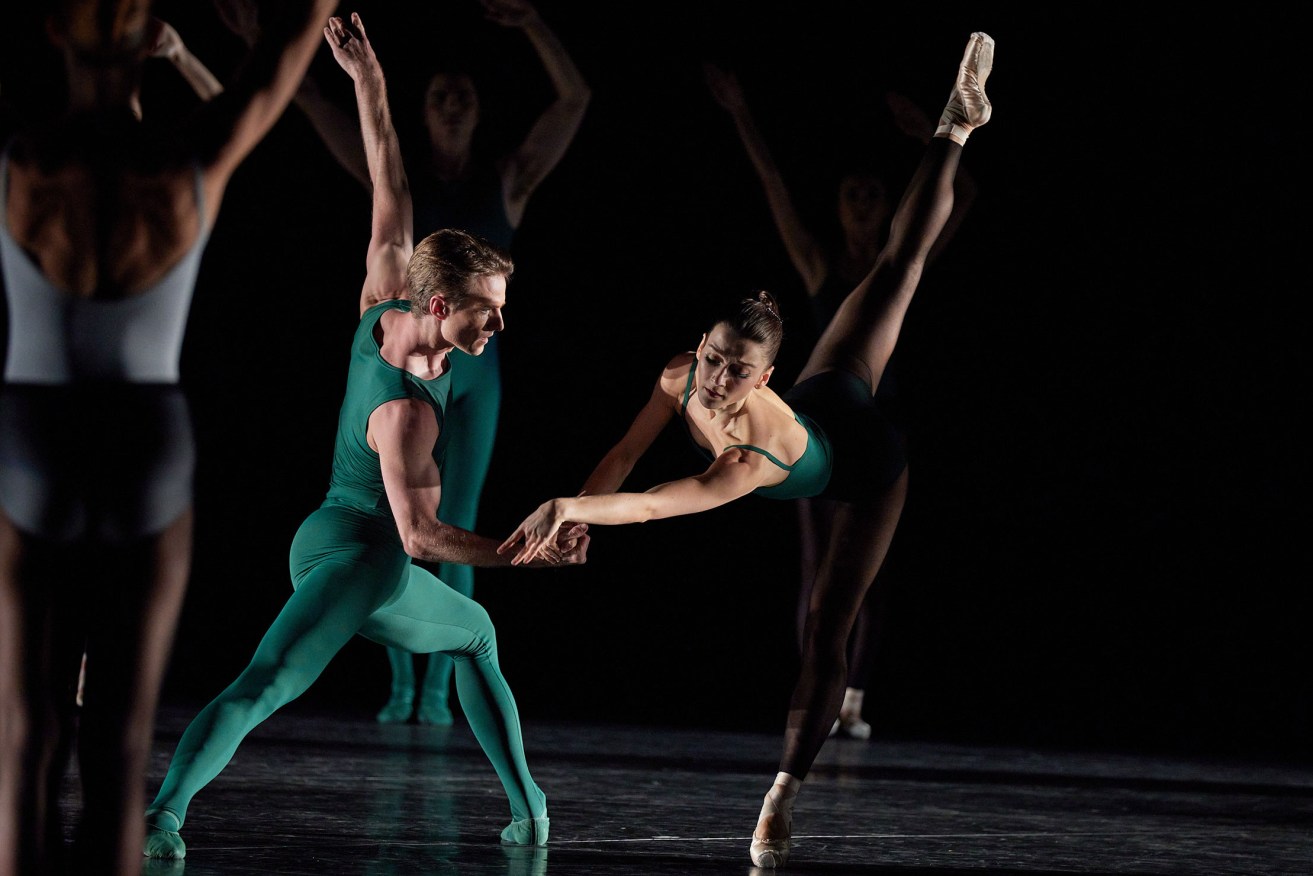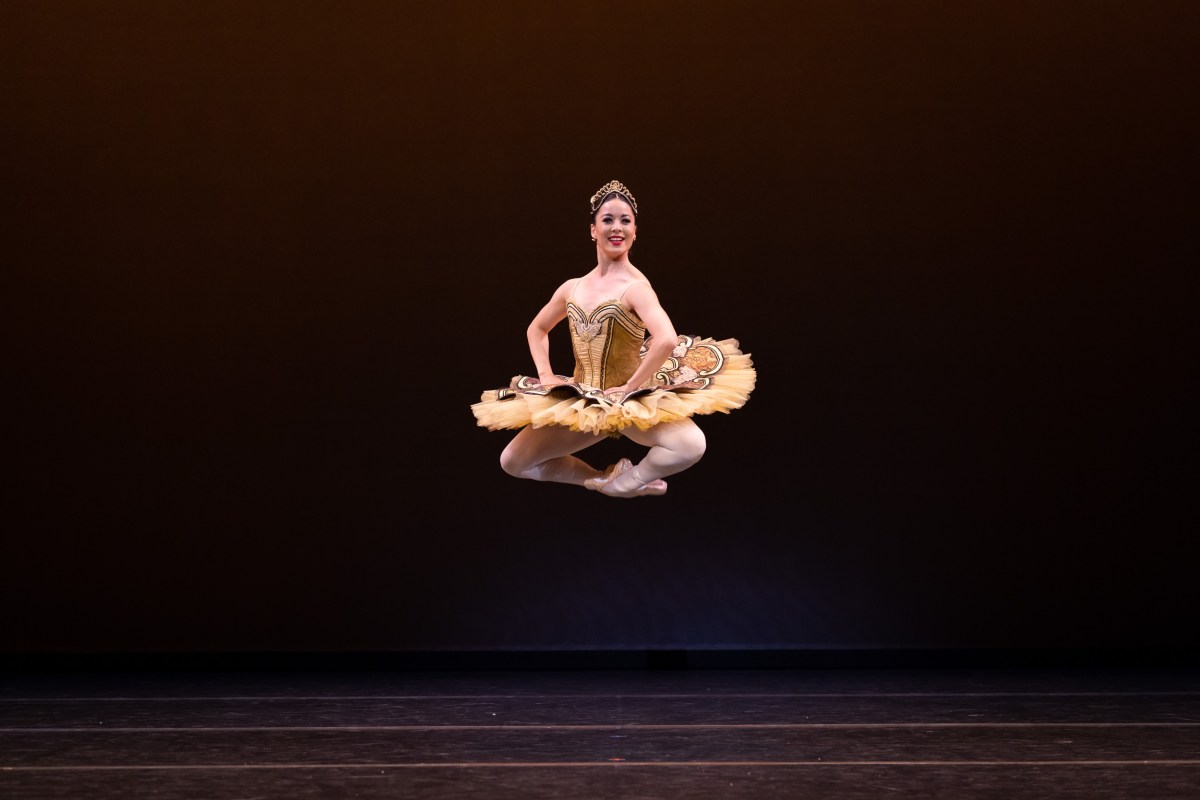Dance review: Australian Ballet’s Counterpointe
Australian Ballet artistic director David Hallberg cleverly combines sections from three of history’s most physically challenging ballets to create a perfectly executed snapshot of the form’s evolution.


'Artifact Suite', one of three works in the Australian Ballet's 'Counterpointe', deconstructs the conventions of narrative dance. Photo: Daniel Boud
From the classical narrative of Marius Petipa to the post-structural genius of William Forsythe, Counterpointe is a celebration of ballet’s ability to mould and adapt as cultural expectations change. But what makes the work truly enthralling is the technical excellence of Australian Ballet’s dancers, who perform these demanding pieces with exquisite precision and intense joie de vivre.
Petipa is responsible for many of the great classics regularly performed today – including The Nutcracker and Swan Lake, lavish ballets with rich narratives and extravagant pageantry. However, the final acts of his ballets were often reserved for the celebration of dance itself and Act III of Raymonda is no exception.
In Hallberg’s version, dancers in rich, warm creams, golds and browns (costumes designed by Hugh Colman in 1998) inhabit a minimally opulent set (Kat Chan) that is swathed in great loops of burgundy velvet. In formations of two, four, eight and 16 dancers, they perform a series of perfectly synchronised routines that have all the froth and frill of a Broadway musical.
But there are also moments so delicate and intimate that they require a quieter attention. Sharni Spencer’s “Variation de Raymonde”, for example, is performed with exquisite grace, her bourrées as ethereal as gossamer, her arm movements as glitteringly fluid as liquid gold. And as Raymonda’s fiancé Jean de Brienne, Chengwu Guo inhabits the music with characteristic precision, every cabriole beat-perfect, every landing flawless.

Australian Ballet dancer Jill Ogai in Act III of Ramonda. Photo: Daniel Boud
The link in the chain of works in Counterpointe is the Tchaikovsky Pas de Deux, originally choreographed by Petipa for Swan Lake in the late 19th century and later made famous through George Balanchine’s 1960 adaptation. Balanchine was heavily influenced by Petipa, but prioritised dance over storytelling, and his version of the Tchaikovsky Pas de Deux has been described as “an eight-minute display of ballet bravura and technique”.
It’s an incredibly demanding piece that principals Yuumi Yamada and Brett Chynoweth deliver with thrilling bravado. While the interaction between the two falls short of intuitive, the technical prowess of the dancers allows Balanchine’s invigorating, energetic choreography to shine. The high-speed pirouetting and double tours en l’air of the solo pieces are as exhilarating and gasp-inducing as they must have been when first staged.
Hallberg has chosen the condensed version of Forsythe’s 1984 ballet, Artifact, to complete the grand arc from classical to contemporary. Influenced by the neoclassical, modernist style of Balanchine, Forsythe took things a step further, completely deconstructing the conventions of narrative dance. The result, as seen in this performance of Artifact Suite, is jaw-droppingly beautiful.
Thirty-two dancers in forest-green leotards flood the dramatically lit stage (Forsythe was also responsible for lighting). There is something of the military in the squared-off, geometric formations, long lines of dancers moving in unison, arms rigidly delivering semaphore-like messages. But this is contrasted by the breakaway duets whose rippling cascades of movement are punctuated by twisted arabesques, deformed cambrés and frantic, ever-changing positions. It’s a far remove from Petipa’s choreography and yet there is very much a feeling of honouring rather than criticising traditional ballet forms.
Throughout the first half of Artifact Suite, the performance is periodically interrupted by the curtain crashing down onto the stage before swiftly lifting to reveal a changed configuration of dancers. This causes the audience to view the performance in a new light in much the same way that the curtain rising on the different choreographies of Counterpointe shines a new light on ballet as a whole, allowing us to see each piece within the context of history.
The second half is more organically fluid. Dancers criss-cross the stage in random-seeming (yet scrupulously co-ordinated) patterns, arms extended and flapping like elegant birds. Or they lie on the floor with their arms forming rows of crosses and bent-elbow V-shapes. Handclaps frequently punctuate the movement, echoing earlier handclaps in Raymonda, as though the contrasting iterations of balletic form were applauding each other across the decades.
Counterpointe is ultimately an homage to the ever-expanding mystery and beauty of balletic form. It also honours the physical endurance of the dancers, forever pushing their bodies towards the impossible. Most importantly, it leaves us energised, wiser and more in love than ever with the mesmerising spell of ballet.
The Australian Ballet’s Counterpointe is showing at Her Majesty’s Theatre until July 13.




